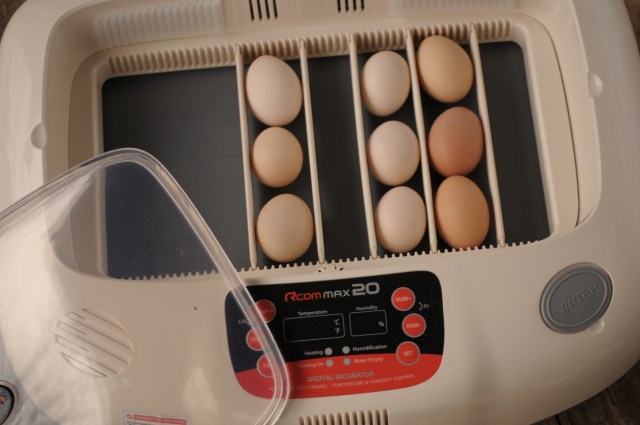Transporting eggs for incubation is a critical task for anyone involved in poultry farming or breeding. Understanding how to transport eggs before incubation effectively can make a significant difference in the hatching success rate. Whether you are a seasoned farmer or a beginner, knowing the right techniques and precautions is essential to ensure the eggs remain viable and healthy throughout the journey.
This guide will explore the best practices and considerations for safely transporting eggs, ensuring that they arrive at their destination ready for incubation. The process might seem daunting at first, but with the right knowledge and preparation, it can be a straightforward task. Let’s dive into the details of this essential process.

Understanding the Importance of Proper Egg Transportation
Proper transportation of eggs is crucial because even slight mishandling can lead to a decrease in hatchability. The transportation phase is often considered the most vulnerable period for eggs before they are incubated. The goal is to minimize any form of stress or physical damage to the eggs, which could compromise their development.
Why Is It Important?
Eggs are extremely delicate and any shock, temperature fluctuations, or improper handling can negatively impact the embryos inside. Ensuring a stable environment during transportation is key to maintaining the quality and viability of the eggs, leading to higher success rates in hatching.
Potential Risks
There are several risks associated with transporting eggs, such as temperature variations, physical shocks, and contamination. Each of these factors can contribute to a reduced hatch rate, making it essential to be aware of and mitigate these risks effectively.
Preparation for Egg Transportation
Selecting the Right Eggs
Before beginning the transportation process, it’s important to select eggs that are suitable for incubation. Look for eggs that are clean, with a smooth shell and no cracks. Avoid eggs that are irregularly shaped, as these may not hatch well.
Cleaning and Sanitizing
Clean and sanitize the eggs gently to remove any dirt or bacteria. This step is crucial to prevent the spread of contaminants that could potentially harm the developing embryos. Use a mild disinfectant solution and handle the eggs carefully to avoid damage.
Packaging Materials
Choosing the right packaging materials is crucial for protecting the eggs during transit. Consider using foam egg shippers or specially designed egg cartons that provide cushioning and support. Ensure that the packaging is sturdy and can absorb any shocks or movements during transportation.
Transportation Methods
Vehicle Considerations
When transporting eggs, it’s important to use a vehicle that can maintain a stable temperature. Avoid exposing the eggs to direct sunlight or extreme temperatures. If possible, use a climate-controlled vehicle to ensure a consistent environment.
Temperature Control
Maintaining an optimal temperature is critical during transportation. The ideal temperature range for transporting eggs is between 55F to 65F (13C to 18C). Use a thermometer to monitor the temperature inside the vehicle and make adjustments as necessary to prevent any fluctuations.
Minimizing Movement
Secure the packaging in place to minimize any movement or vibration during transit. Use padding or braces to keep the egg cartons stable and reduce the risk of damage caused by bumps or sudden stops.
Post-Transportation Care
Inspecting the Eggs
Upon arrival, inspect the eggs for any visible damage or cracks. Handle each egg carefully and check for any signs of abnormalities. Discard any eggs that appear damaged or compromised.
Resting the Eggs
Allow the eggs to rest for a few hours before incubation. This step helps the embryos settle and recover from any stress experienced during transportation. Place the eggs in a cool, shaded area with good ventilation to ensure optimal conditions.
Common Mistakes to Avoid
Overpacking
Avoid overcrowding the eggs in the packaging. Overpacking can lead to increased pressure and potential damage to the eggs. Ensure that there is adequate space between each egg to allow for proper airflow and cushioning.
Ignoring Temperature Fluctuations
One of the most common mistakes is neglecting to monitor the temperature during transportation. Even minor fluctuations can impact the viability of the eggs, so it’s essential to maintain a consistent temperature throughout the journey.
Using Inadequate Packaging
Using insufficient or inappropriate packaging materials can lead to damage and reduced hatchability. Invest in high-quality packaging solutions that are designed specifically for transporting eggs to ensure the best possible protection.
Conclusion
Transporting eggs before incubation requires careful planning and attention to detail. By understanding how to transport eggs before incubation effectively, you can significantly improve the chances of successful hatching. From selecting the right eggs to ensuring optimal transportation conditions, each step plays a vital role in protecting the delicate embryos. With the right techniques and precautions, you can ensure that your eggs arrive safely and ready for incubation.
For more information on egg incubation and care, consider visiting Egg Storage and Humidity in Incubator. Additionally, explore this guide for more insights on how incubators work.

FAQ
How long can eggs be stored before incubation?
Eggs can typically be stored for up to 7 days before incubation. It’s important to keep them in a cool, stable environment during this time to maintain their viability.
What is the ideal temperature for transporting eggs?
The ideal temperature range for transporting eggs is between 55F to 65F (13C to 18C). Maintaining a consistent temperature is crucial for preserving the quality of the eggs.
Can I transport eggs in a regular car?
Yes, you can transport eggs in a regular car, but it’s important to ensure that the temperature is stable and the eggs are properly secured to prevent movement or damage during transit.
This article contains affiliate links. We may earn a commission at no extra cost to you.











